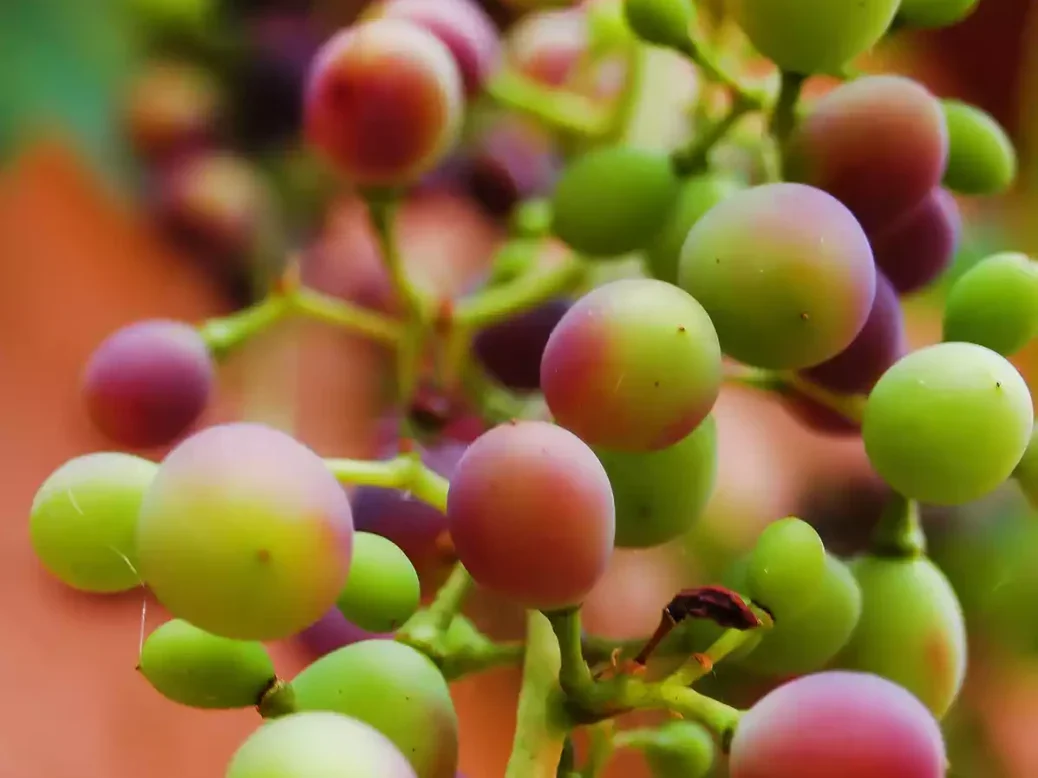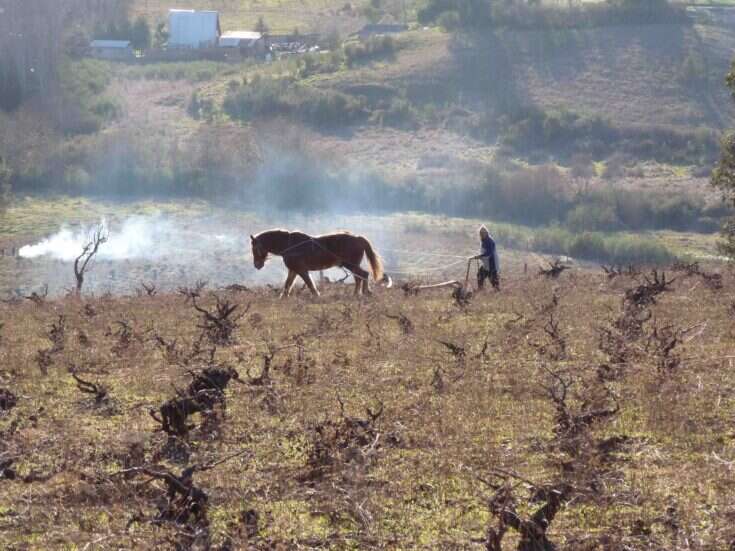Leisurely ripening is associated not just with “cool-climate” viticulture but with enhanced vinous quality generally. Climatic warming is associated with earlier. It might seem obvious, then, that under the sign of climate change, more slowly ripening grape varieties, clones, or selections should be promoted.
That’s certainly how Jon Bonné sees it. His comprehensive, provocative, and insight-rich The New French Wine emphasizes alleged advantages, faced with a warming climate, of “later-ripening” varieties or selections. Yet that is paradoxical in a book consistently championing biodynamic growers. Because if you ask these, many or most present a very different picture, extolling the advantages—inter alia vivacity and modest eventual alcohol—of early harvest, which, they allege, makes sense precisely because a biodynamic regimen promotes the evolution of flavors in advance of sugar accumulation. Nor is advocacy of techniques alleged to promote ripe flavors while inhibiting potential alcohol—such as eliminating or delaying hedging—confined to practitioners of biodynamics.
So, should viticultural methods and principles of vine selection be targeting extended ripening time? Or should the emphasis be on methods and selections that permit earlier harvest? Ironically, but also luckily, these alternatives arise from a common set of gustatory goals—achieving vivacity by preserving acidity, and lift by moderating alcohol, without sacrificing distinctive deliciousness—so there is a shared set of criteria against which to judge their success. But the possibility must be faced that either approach could represent a qualitative trade-off.
Earlier harvest—even assuming one’s grapes are judged ripe-tasting—is a strategy called into question by at least two considerations. The first of these is unassailable: Earlier picking enhances the likelihood that this will happen under warm or even hot summer conditions, which present a challenge to preserving aromatic freshness and acidity. But nighttime harvest or chilling chambers (both increasingly frequent) and an ability to harvest rapidly can compensate to a significant degree, at least for those who can afford the requisite upgrades in manpower and equipment. Insect pests represent a significant threat, though only a killing frost is going to put paid to those, and the luxury of that happening before harvest is increasingly rare.
Jumping either way
Having just referred to chill as a luxury raises a more intriguing, as well as problematic, consideration. It’s widely believed that diurnal temperature variations and cool nights not only preserve grapes’ acidity but also positively influence their aromatic potential. One encounters this claim regularly in such ostensibly still “cool-climate” growing regions as those of Lower Austria or Germany’s Rhine basin, and if one finds it less frequently mentioned by producers in Champagne, that may be lest attention is called to how often recent harvests have begun already by the first days in September. Scientific research in this area appears regrettably scant. But Fulvio Mattivi at the University of Trento has demonstrated an inverse relationship between temperature and levels of rotundone, thus putting some teeth into Lower Austrian wine growers’ routine insistence that cool temperatures enhance the trademark peppery bite of their Grüner Veltliner. The reader will be spared supportive quotations from elite wine growers alleging a wide range of phenolic enhancement through chill, but Rheinhessen’s Klaus Peter Keller—an undisputed star among them—puts the relevant challenge in perspective. After insisting that “cool nights give the best Rieslings” and relating that “when autumn temperatures drop down to zero [°C], one has the impression that aromas intensify, and one experiences a different density and complexity in the grapes,” he adds, “Often nothing can take place slowly, and the grapes have to get picked when they’re ripe, whether it’s cold, cool, or warm.”
Even an association of acid retention with cool temperatures is not simple. What gets locked in by cool nights is malic acid, which degrades under the influence of daytime metabolism, while grapes’ proportion of tartaric acid increases. (Though if it’s stressfully hot, vines will shut down, inhibiting respiration of malic acid just as effectively as chilly nights do.) And it’s tartaric acid that has by far the greater influence on impressions of vinous vivacity and refreshment. Not to mention that malic acid tends to give way to lactic unless that conversion is inhibited by high pH, very cold cellar temperatures, or some sort of intervention, even if just the intervention of early bottling.
Then there’s the extent to which slower ripening and time on the vine bring dividends over and beyond any that may or may not be conveyed by fluctuating temperatures. Oregon wine grower Mimi Casteel, an eloquent advocate of regenerative viticulture, insists (in a podcast interview with Jesse Frost, November 4, 2022), “You just can’t replace [time] with anything else. You can keep [your foliage] really bright green just with nitrogen, but when your season’s over, it’s over. I mean, you can tell when the plants are done and when the fruit is done. And if our seasons are going to get shorter, hotter, and drier, we should be doing everything that we can to build the infrastructure that will support that time on the vine, where vines are actually still supporting metabolism.”
The question “sooner or later?” may have no definite answer. Some growers will concentrate on pushing back the point of flavor ripening, while others will attempt to move it forward; and both may claim success when measured by shared organoleptic criteria. Inarguably—for now, at least—wonderful wines are issuing from both camps.








